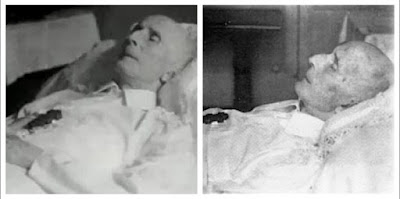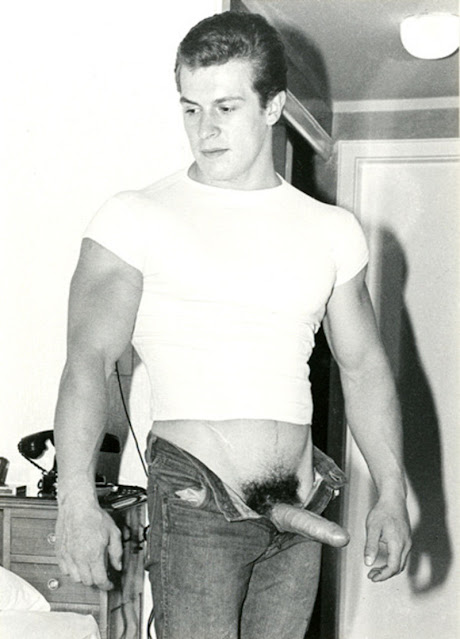Sunday, August 21, 2022
Prince Felix Felixovich Yusupov
 |
| The Moika Palace or Yusupov Palace was once the primary residence in St. Petersburg, Russia of the House of Yusupov. The building was the site of Grigori Rasputin's murder in the early morning of December 17, 1916. |
 |
| Zinaida and Felix Yusupov at a ball "in traditional Russian costume", 1903. |
 |
| Portrait of Felix Yusupov (1903) by Valentin Serov |
 |
| Princess Irina Alexandrovna of Russia with her fiance Prince Felix Yusupov, 1914 |
 |
| In exile |
 |
| On September 27, 1967, Prince Felix Youssoupoff passed away in his modest Paris home. |
Classic Bodybuilder Helmut Riedmeier
Helmut Riedmeier (born May 14, 1944 in Munich ) is a German former bodybuilder . He was Mr. Europe five times and Mr. Universe twice .
2001 International British Master Champion
1997 United Kingdom Championship (over 50) – 1st place
1996 NABBA Masters Mr Britain - 1st place
1995 NABBA Masters Mr Britain - 1st place
1983 IFBB European Mens Championships - 5th place
1974 NABBA Professional Mr. Universe - 1st place
1972 Mr Europe - 1st place
1972 IFBB European Mens Championships - 1st place
1971 IFBB European Mens Championships - 2nd place
1971 FFCPAS Mr.Europe - 2nd place
1971 IFBB Mr. Universe - 1st place
1971 NABBA Professional Mr. United Kingdom - 1st place
1970 IFBB European Mens Championships - 1st place
1970 NABBA Mr. Universe - 2nd place
1970 Mr Europe - 1st place
1969 IFBB Mr World - 5th place
1968 NABBA Mr. Universe - 2nd place
1966 NABBA Mr. Universe - 5th place
1966 Mr Europe - 2nd place
1965 Mr Europe - 1st place
1965 Mr. Germany - 1st place
1964 Junior Mr. Germany - 1st place
Daniel Carmago - Stuttgart Ballet
Daniel Camargo (born September 1991) is a Brazilian ballet dancer. He joined the Stuttgart Ballet in 2009, and was promoted to principal dancer in 2013. In 2016, he left to join the Dutch National Ballet, before leaving in 2019 to pursue a freelance career. In 2022, he joined the American Ballet Theatre.
a young Alan Bates
Bates was married to actress Victoria Ward from 1970 until her death in 1992, although they had separated many years earlier. They had twin sons, born in November 1970, the actors Benedick Bates and Tristan Bates. Tristan died following an asthma attack in Tokyo in 1990.
Bates had numerous gay relationships, including those with actor Nickolas Grace and Olympic skater John Curry as detailed in Donald Spoto's authorised biography Otherwise Engaged: The Life of Alan Bates. Spoto characterised Bates's sexuality as ambiguous, and said, "he loved women but enjoyed his closest relationships with men". Even after homosexuality was partially decriminalised in Britain in 1967, Bates rigorously avoided interviews and questions about his personal life, and even denied to his male lovers that there was a homosexual component in his nature.While throughout his life Bates sought to be regarded as a ladies' man or at least as a man who, as an actor, could appear attractive to and attracted by women, he also chose many roles with an aspect of homosexuality or bisexuality, including the role of Rupert in the 1969 film Women in Love and the role of Frank in the 1988 film We Think the World of You.
In the later years of his life, Bates had a relationship with the Welsh actress Angharad Rees and in the last years, his companion was his longtime friend, actress Joanna Pettet, his co-star in the 1964 Broadway play Poor Richard. They divided their time between New York and London.
Bates died of pancreatic cancer in December 2003 after going into a coma. He is buried at All Saints' Church, Bradbourne in Derbyshire.
Was John Wayne Bisexual?
Different Perspectives.
according to the source who outed him, John Wayne was “queer as a two-headed trout.” I first came across the news that Wayne was light in the spurs when I was staying at a kitschy old out-of-the-way hotel in the Valley called the Sportsmen’s Lodge. I got to chatting with a long-time hotel employee who began dishing dirt about some of the famous people he had come across during his long tenure there. His favorite, he said, was Bogie who used to tip him with a $50 bill and a Cuban cigar. His next anecdote threw me for a loop, however. “John Wayne used to come here all the time,” he recalled. “He was a pansy, you know.” In a million years, I would have never guessed that “He used to come by in the afternoon with men to go fishing in the pond and then they’d take a room and he’d say he was in ‘conference’ and that he shouldn’t be disturbed. We all knew what that meant and one of the chambermaids told us that she once caught him getting a blowjob from a guy. But unlike some of the other stars who came by with men, Wayne didn’t like them too young. His friends were usually in their twenties or even older, but none of them were famous, at least not the ones he would rent a room with.” http://ianundercover.com/
according to the source who outed him, John Wayne was “queer as a two-headed trout.” I first came across the news that Wayne was light in the spurs when I was staying at a kitschy old out-of-the-way hotel in the Valley called the Sportsmen’s Lodge. I got to chatting with a long-time hotel employee who began dishing dirt about some of the famous people he had come across during his long tenure there. His favorite, he said, was Bogie who used to tip him with a $50 bill and a Cuban cigar. His next anecdote threw me for a loop, however. “John Wayne used to come here all the time,” he recalled. “He was a pansy, you know.” In a million years, I would have never guessed that “He used to come by in the afternoon with men to go fishing in the pond and then they’d take a room and he’d say he was in ‘conference’ and that he shouldn’t be disturbed. We all knew what that meant and one of the chambermaids told us that she once caught him getting a blowjob from a guy. But unlike some of the other stars who came by with men, Wayne didn’t like them too young. His friends were usually in their twenties or even older, but none of them were famous, at least not the ones he would rent a room with.” http://ianundercover.com/
The Surprisingly Risque World of Society Painter John Singer Sargent
 |
| John Singer Sargent self portrait |
Factoids to impress your friends from the new portrait exhibition at the Met
by
James Tarmy
It’s easy to peg John Singer Sargent—whose best-known portraits are of stiff-backed children and elaborately dressed socialites drowning in tulle—as a fluffy society painter of the rigid late-Victorian era. To wit, the biggest scandal of his career involved a portrait of “Madame X,” aka socialite Virginie Amelie Avegno Gautrea, with a lasciviously draped dress strap falling onto her shoulder. (Gasp!)
But Sargent (1856–1925) was infinitely more freewheeling than his better-known works would imply. In the exhibition Sargent: Portraits of Artists and Friends, which opens on June 30 at New York’s Metropolitan Museum of Art, a different kind of painter emerges.
“The show demonstrates that he moved very easily through these circles of progressive society,” says Stephanie Herdrich, who co-curated the show. “Many gay men, flamboyant performers, intellectuals, he was very comfortable with all of them.”
There are 91 portraits of just these characters in the show (along with another 21 drawings from the Met’s collection), which range from the famous—Claude Monet, Robert Louis Stevenson, W.B. Yeats, and Henry James—to random characters whom Sargent encountered as he bounced around Europe and North America. We’ve chosen a few of the most notable examples, the radical feminists and captains of industry and flamenco dancers, who present a neat alternative to Sargent’s reputation as a fussy painter of the upper crust.
There are 91 portraits of just these characters in the show (along with another 21 drawings from the Met’s collection), which range from the famous—Claude Monet, Robert Louis Stevenson, W.B. Yeats, and Henry James—to random characters whom Sargent encountered as he bounced around Europe and North America. We’ve chosen a few of the most notable examples, the radical feminists and captains of industry and flamenco dancers, who present a neat alternative to Sargent’s reputation as a fussy painter of the upper crust.
 |
| Dr Pozzi at Home, 1881 - John Singer Sargent |
The Parisian Samuel-Jean Pozzi palled around with royalty and wrote one of the first major textbooks on gynecological surgery. He was an early patron of Sargent, and, among other things, collected antiquities, sculpture, and tapestries. Viewers of the portrait, where the doctor lounges in a crimson bathrobe while fingering his lapel, will probably not be surprised to learn that he was also considered “a sensualist and an aesthete,” according to the catalog.
 |
| John Singer Sargent, Léon Delafosse, c. 1895-8 |
Léon Delafosse, whose patron was Comte Robert de Montesquiou, was a celebrated pianist and composer and friend of the Parisian beau monde, including Proust. “Sargent was so intimately a part of these circles,” Herdrich says. “We think of him quickly dashing off society portraits, but he was deliberately seeking out these intellectuals.” Still, there was a question of accessories. As Sargent wrote to a friend: “Of course Delafosse is a decadent especially in the matter of neck-ties—but he is a very intelligent little Frenchman.”
 |
| John Singer Sargent, Man Wearing Laurels, 1874-80 |
 |
| Lord Dalhousie (1900). John Singer Sargent. Oil on canvas. 101.6 x 152.4 cm. Private collection |
 |
| John Singer Sargent |
J.C. Leyendecker
 |
| J.C. Leyendecker in 1895. |
Nobody had to tell J.C. Leyendecker that sex sells. Before the conservative backlash of the mid-20th century, the American public celebrated his images of sleek muscle-men, whose glistening homo-eroticism adorned endless magazine covers. Yet Leyendecker’s name is almost forgotten, whitewashed over by Norman Rockwell’s legacy of tame, small-town Americana.
 |
| Leyendecker’s painting of Mercury, the god of speed, for Collier’s in 1907 draws from classical sculpture. |
 |
| This 1932 Leyendecker cover image for the “Saturday Evening Post” literally puts the near-naked male on a pedestal. |
 |
| In this 1907 Leyendecker painting for Arrow dress shirts, all eyes lead to the dapper man in brown. |
 |
| Cleanliness is next to godliness: This atypical Ivory Soap advertisement from 1922 features a priest. |
 |
| Advertisement for Kuppenheimer's John Barrymore suits, 1927 |
 |
| Arrow ad, 1929 |
 |
| Arrow advertising, 1912 |
 |
| Collier's cover, 1916 |
 |
| Easter, 1936 |
Subscribe to:
Comments (Atom)

































